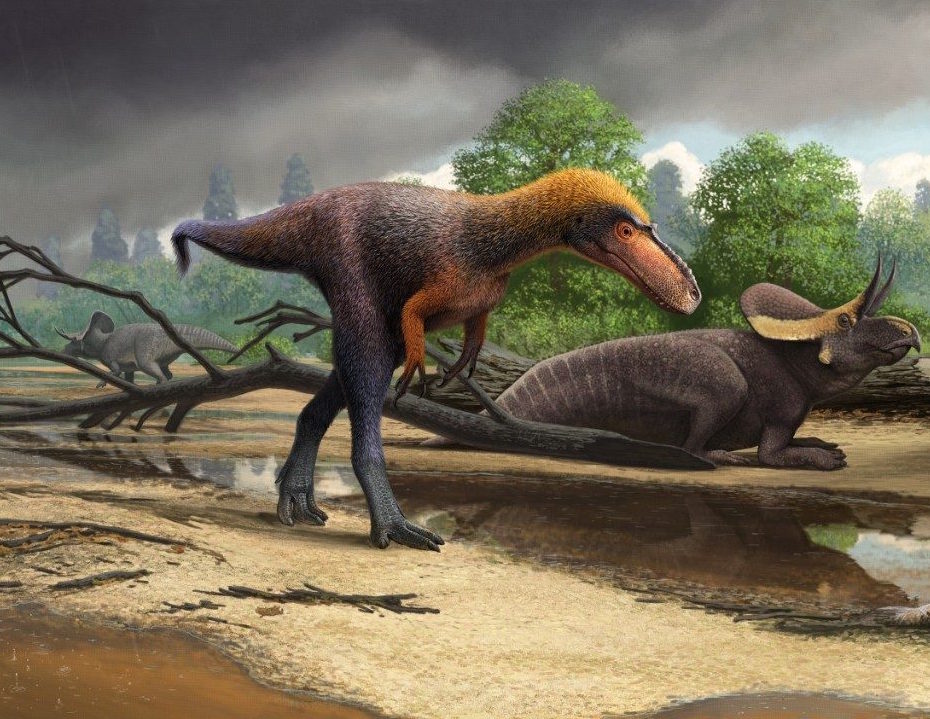
Newly named Tyrannosaurus Rex cousin was only three feet tall
An international team of scientists is describing a previously unknown relative of Tyrannosaurus rex that was uncovered in New Mexico. The new tyrannosauroid dinosaur, which was much smaller than the ferocious T. rex, has been named Suskityrannus hazelae.
The dinosaur was discovered by paleontologist Sterling Nesbitt, an assistant professor in the Department of Geosciences at Virginia Tech. Remarkably, Professor Nesbitt had found the fossil at age 16 while he was a high school student participating in a dig expedition in 1998.
According to Professor Nesbitt, the dinosaur stood roughly three feet tall at the hip and was about nine feet in length. The entire animal was only slightly longer than just the skull of a fully grown Tyrannosaurus rex.
“Suskityrannus has a much more slender skull and foot than its later and larger cousins, the Tyrannosaurus rex,” said Professor Nesbitt. “The find also links the older and smaller tyrannosauroids from North America and China with the much larger tyrannosaurids that lasted until the final extinction of non-avian dinosaurs.”
S. hazelae likely weighed between 45 and 90 pounds, while a full-grown Tyrannosaurus rex weighed roughly nine tons. The smaller relative of T. rex was also a meat eater, although it is not known which animals it hunted.
Based on an analysis of its bones, the specimen found by Professor Nesbitt was at least three years old at the time of its death, and the fossil dates back 92 million years to the Cretaceous Period.
“Suskityrannus gives us a glimpse into the evolution of tyrannosaurs just before they take over the planet,” said Professor Nesbitt. “It also belongs to a dinosaurian fauna that just proceeds the iconic dinosaurian faunas in the latest Cretaceous that include some of the most famous dinosaurs, such as the Triceratops, predators like Tyrannosaurus rex, and duckbill dinosaurs like Edmotosaurus.”
The study is published in the journal Nature Ecology & Evolution.
—
By Chrissy Sexton, Earth.com Staff Writer
Image Credit: Virginia Tech, Andrey Atuchin













